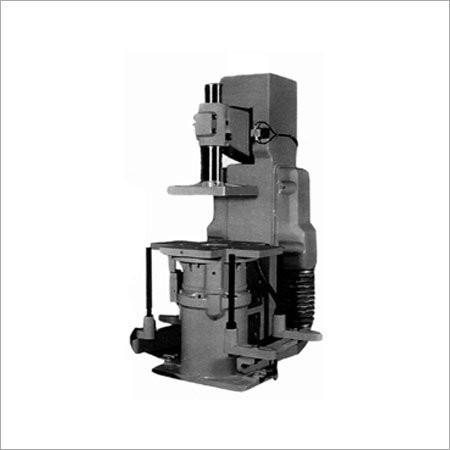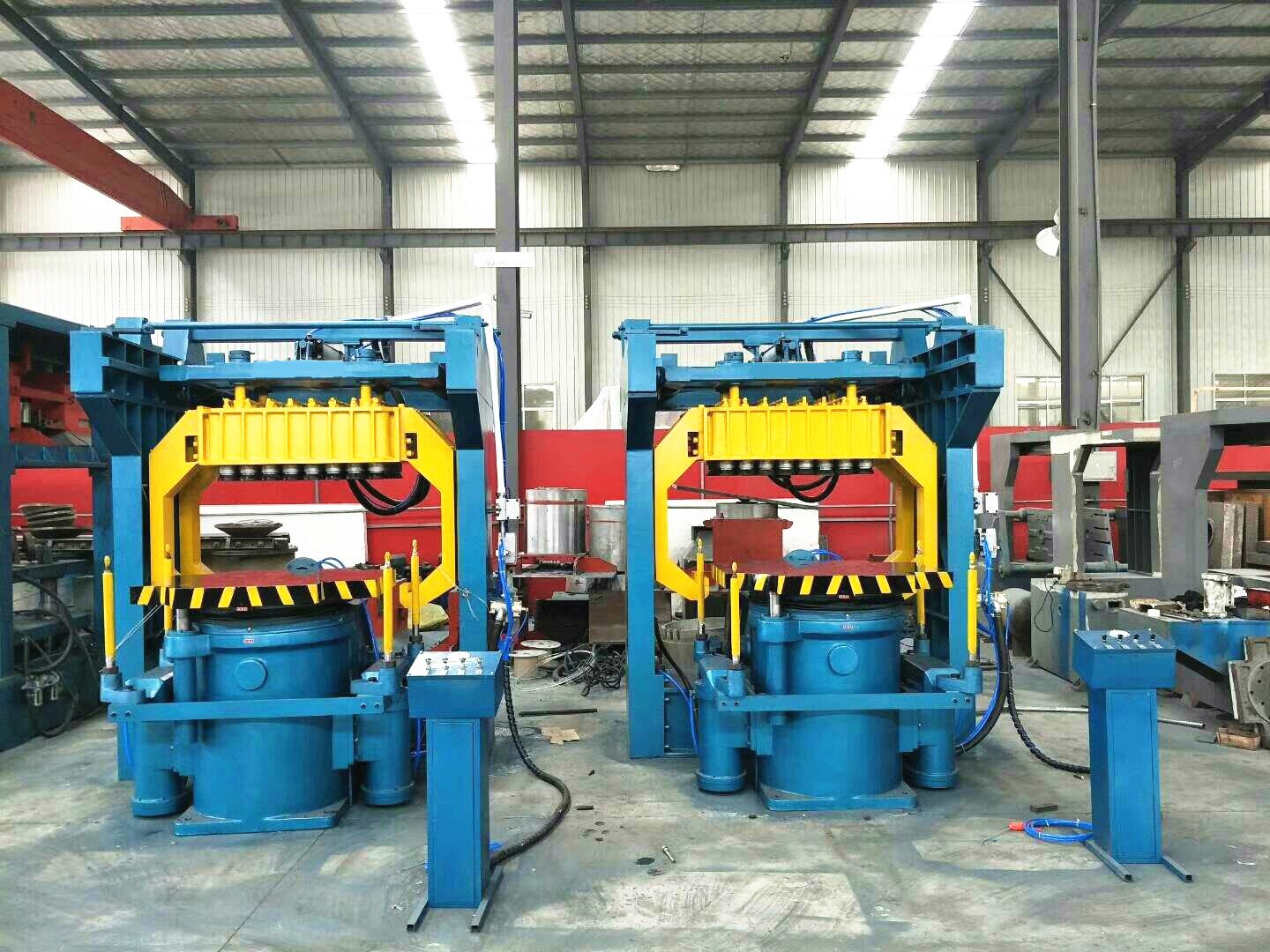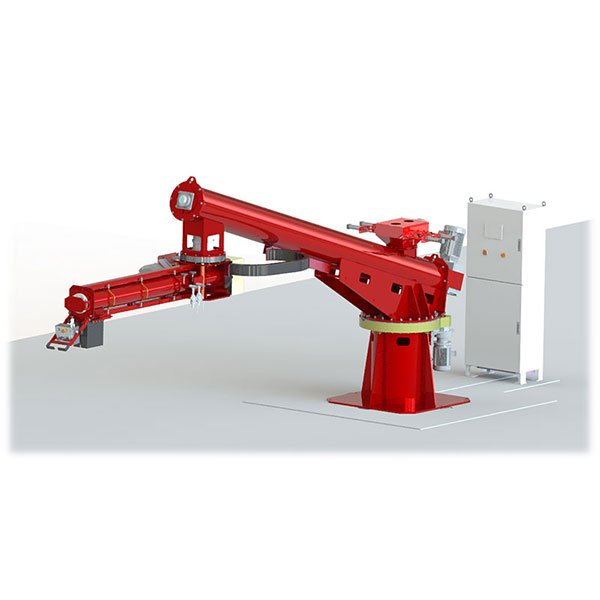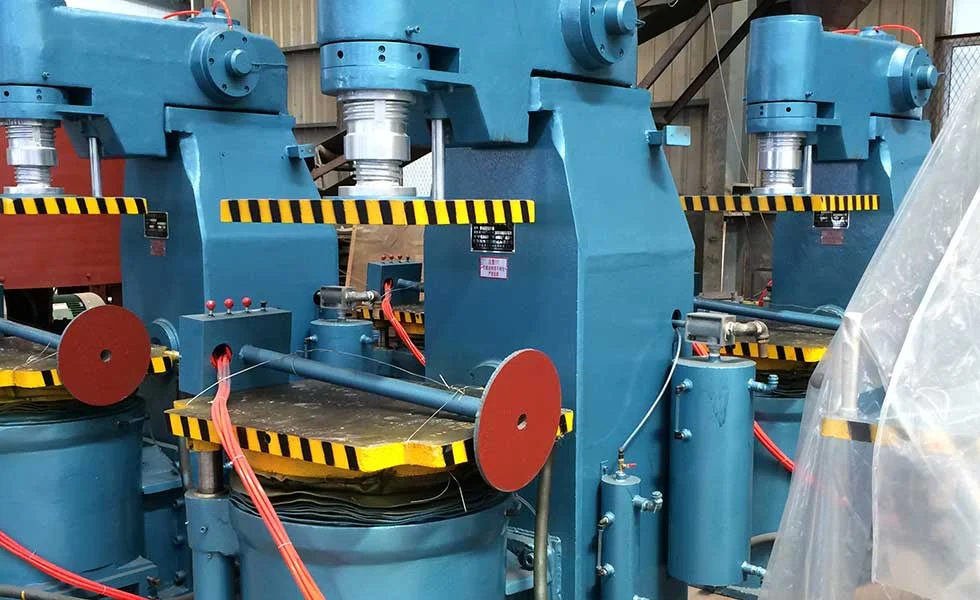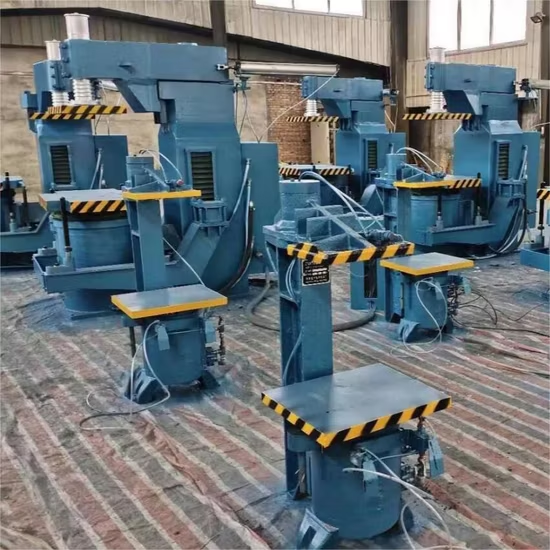
Steel pipes face harsh conditions—corrosion, wear, and coatings that must adhere perfectly. But choosing the wrong blasting machine leads to poor finish, high costs, and constant maintenance.
The best shot blasting machine for steel pipes is one that matches pipe size, surface quality needs, production volume, and efficiency expectations—ensuring optimal performance and cost savings.
Let me walk you through how I help my customers select the right system by balancing practical needs with technical precision.
What Is a Shot Blasting Machine for Steel Pipes?
Steel pipes corrode, and that costs companies millions. Poor surface prep before coating results in peeling, rework, and failures in the field.
A shot blasting machine for steel pipes uses high-speed abrasive media to clean rust, scale, and contaminants from pipe surfaces—internally or externally—ensuring coating adhesion and corrosion resistance.
Steel pipe shot blasting machines are designed to handle round, often long and heavy materials. These machines can treat the outer surface, inner surface, or both. Unlike acid pickling or manual grinding, shot blasting delivers fast, consistent results with minimal labor. It also aligns with modern environmental regulations.
They offer critical advantages:
- Improved coating adhesion due to roughened surfaces.
- Better corrosion resistance by exposing clean metal.
- Time savings with continuous feed options.
Compared to sandblasting or chemical treatment, shot blasting is cleaner, safer, and more suitable for automated production lines. That’s why it has become the industry standard.
Why Choosing the Right Shot Blasting Machine Matters?
Many companies choose based on price alone—only to face line stoppages, coating defects, and sky-high maintenance.
Choosing the right shot blasting machine determines surface quality, coating performance, and production cost-efficiency in steel pipe manufacturing.
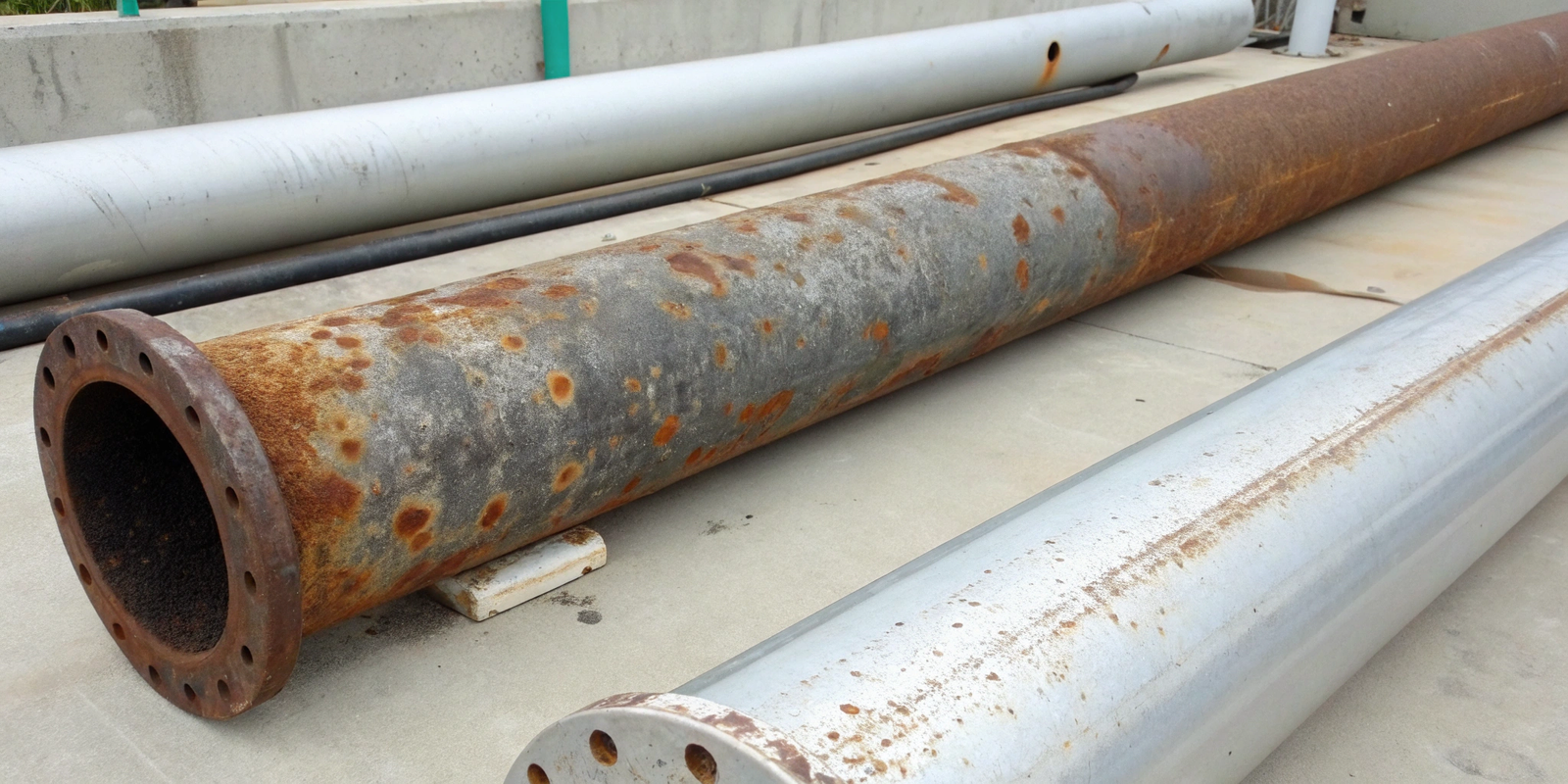
A poor surface prep means poor adhesion. That leads to premature coating failure, corrosion, and costly repairs. On the other hand, the right machine ensures:
- Uniform roughness and cleanliness (meeting SA 2.5 or SA 3 standards)
- Long-lasting protection against rust and corrosion
- Smooth production flow with minimal downtime
In my own projects, I've seen pipe plants reduce coating rejects by 40% just by upgrading to a better-fit blasting system. This isn’t just about cleaning—it’s about improving the total lifecycle value of the pipes.
Types of Shot Blasting Machines for Steel Pipes?
Every pipe isn't the same—and neither should your blasting machine be.
There are several types of shot blasting machines for steel pipes: external pipe blasters, internal blasters, pass-through conveyor systems, and rotary table machines—each fit specific pipe specs and production needs.
Here's a quick comparison table for clarity:
| Machine Type | Application | Pipe Size Suitability | Pros | Cons |
|---|---|---|---|---|
| External Pipe Blaster | Outer surface | Ø50mm–Ø1200mm | Fast, high throughput | Needs media recovery setup |
| Internal Pipe Blaster | Inner surface | Ø76mm–Ø800mm | Deep inner cleaning | Slower, more complex setup |
| Conveyor/Pass-through | In-line process | Ø60mm–Ø1500mm | Fully automated | High initial cost |
| Rotary Table | Batch, small pipes | Ø20mm–Ø300mm | Compact, flexible | Lower volume |
When helping a client in Poland, we combined a pass-through system for outer blasting and an internal nozzle manipulator for inner treatment. This hybrid approach cut process time by 30% while achieving SA 2.5 consistently.
The right choice always depends on your pipe specs, volume, and quality standards.
Key Factors to Consider When Choosing a Shot Blasting Machine for Steel Pipes?
4.1 Pipe Size and Wall Thickness?
Pipe diameter and wall thickness often dictate the blasting nozzle angle, power, and machine layout.
Choose a machine that matches your pipe size range to ensure uniform blasting without overkill or inefficiency.

A machine that’s too powerful can damage thin-walled pipes. One too weak won’t clean thick, scaled surfaces. Always ensure:
- Adjustable blasting angles
- Support for pipe length and weight
- Reinforced rollers or conveyors for heavy-duty applications
When I worked with a Brazilian oil pipe factory, we had to customize the rollers to hold Ø1.5m pipes weighing over 2 tons—standard systems couldn’t handle the load.
4.2 Production Volume and Speed Requirements?
In high-volume plants, downtime means disaster. Throughput and speed matter.
Machines should match your daily production volume and operational pace—automated systems suit high throughput, while batch machines fit smaller runs.
Here’s a breakdown:
| System Type | Best For | Avg. Pipes/Hour | Example |
|---|---|---|---|
| Manual Batch | Small shops | 5–15 | Job shops |
| Semi-auto | Medium output | 20–40 | Mid-scale OEM |
| Continuous Conveyor | High output | 60+ | Automotive, pipe mills |
During a recent install in the UAE, the customer increased pipe throughput by 45% just by switching from batch to inline pass-through systems.
4.3 Desired Surface Finish and Cleanliness Standards?
Paint sticks well—only if the surface is properly prepped.
Define your surface finish requirements: whether SA 2.5 or SA 3, the machine should reliably hit those levels with consistent roughness (Ra).
Different industries demand different prep grades. For instance:
- SA 2.5: Standard industrial prep
- SA 3: Near-white metal, used for offshore or marine pipes
The abrasive flow, nozzle angle, and pipe rotation speed must be tuned to achieve the correct roughness (usually Ra 40–70 μm). We always test samples in our demo center before final delivery—this saves the client a lot of guesswork.
4.4 Abrasive Type and Media Recycling?
Abrasive media wears out—and wastes money if not recovered.
Choose a machine with a reliable media recycling system and the right abrasive (steel shot, grit, etc.) to match your finish goals and budget.
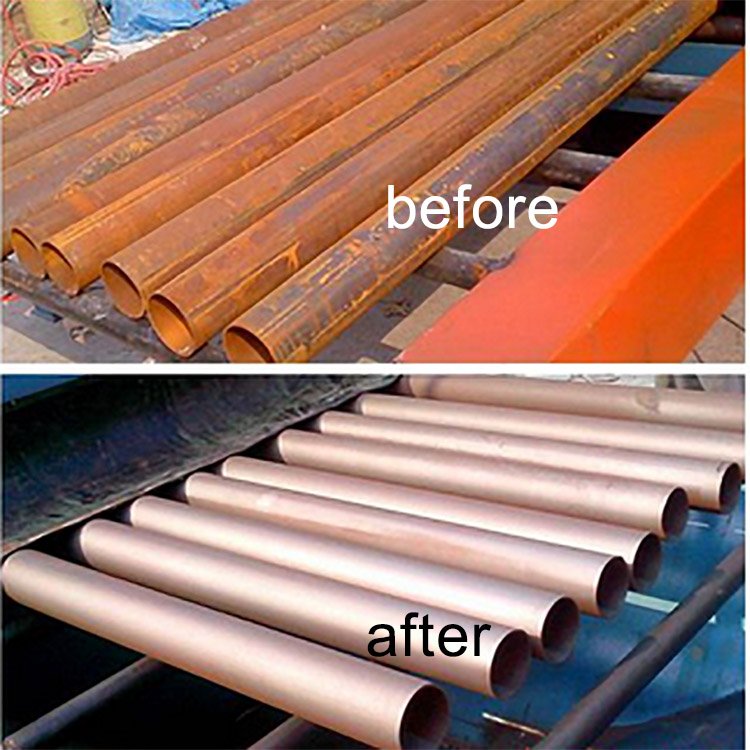
Media selection tips:
| Abrasive | Use Case | Surface Finish | Durability |
|---|---|---|---|
| Steel Shot | Smooth finishes | Ra 30–50 | High |
| Steel Grit | Rough, fast cleaning | Ra 50–80 | Medium |
| Cut Wire | Polishing | Ra <30 | Very High |
The machine should include:
- Separator unit to clean used media
- Elevator + screw conveyor to recirculate it
- Bucket filters or airwashers to remove dust
This extends abrasive life and reduces environmental waste—something increasingly important in Europe and North America.
4.5 Dust Collection and Environmental Compliance?
Dust kills visibility, lungs, and compliance certifications.
Modern machines must include integrated dust collection systems to meet environmental and worker safety standards.
We install multi-stage cartridge filter units that:
- Trap 99.9% of airborne dust
- Auto-clean filters to maintain airflow
- Keep emission under 5mg/m³
When working in Germany or California, these features are essential. Skipping them means delays in getting operating permits.
Comparing Cost vs. Performance in Shot Blasting Machines?
Don’t just look at sticker price—look at lifecycle cost.
The best shot blasting machines offer balanced performance, low maintenance needs, and long-term energy savings—justifying a higher initial investment.
Key cost factors:
| Factor | Low-Cost Option | High-Performance Option |
|---|---|---|
| Initial Price | $30,000 | $70,000+ |
| Downtime/year | 10+ days | <3 days |
| Spare Part Lifespan | 3–6 months | 1–2 years |
| Power Use | High | Optimized |
I often guide clients toward a mid-to-premium tier because downtime costs more than the machine itself over five years.
Tips for Buying a Shot Blasting Machine for Steel Pipes?
A smart buyer asks smart questions.
Before buying, check supplier credibility, request test reports, and ensure service coverage and spare part availability.

Key questions to ask:
- Do you offer customization for pipe size?
- What after-sales service do you provide?
- Is there a demo or reference client I can talk to?
- Do you guarantee SA 2.5/3 prep levels?
I always encourage clients to visit our facility or ask for a video walkthrough of their specific machine.
Common Mistakes to Avoid When Selecting a Shot Blasting Machine?
Rushing the decision always backfires.
Avoid choosing based solely on cost, ignoring production needs, and skipping operator training—these mistakes lead to long-term losses.
Avoid these pitfalls:
- Choosing based on price only — leads to poor durability.
- Overlooking compatibility with pipe specs.
- Skipping training — your team won’t run it efficiently.
- Ignoring maintenance planning — downtime is costly.
I’ve helped clients recover from these mistakes by retrofitting better dust systems, training operators, or even replacing wrongly chosen machines.
Conclusion
Choosing the right shot blasting machine for steel pipes comes down to matching technical needs with operational goals. Focus on pipe specs, production scale, surface quality, and long-term efficiency to make the best choice.


